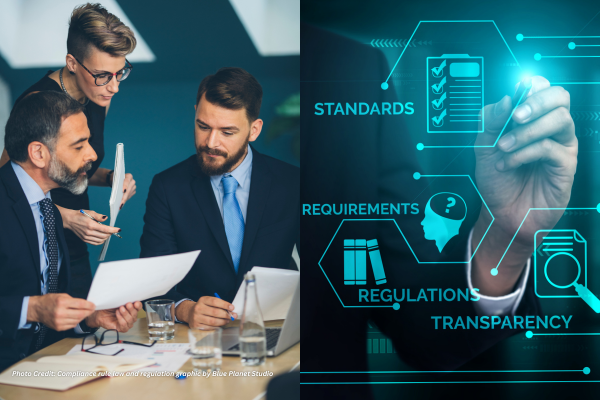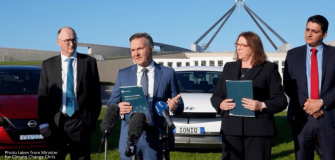Tech research and consulting firm Gartner has identified government technology trends that can guide public sector leaders in accelerating their digital transformation this year.
“Not only is the current global turmoil and technological disruption putting pressure on governments to find a balance between digital opportunities and risks, but it also presents solid opportunities to shape the next generation of digital government,” said Arthur Mickoleit, Director Analyst at Gartner.
“Government CIOs must demonstrate their digital investments aren’t just tactical in nature as they continue to improve service delivery and core mission impacts.”
In this list, Gartner states that government CIOs should consider the impact of government technology trends and apply insights that will improve business capabilities, achieve leadership priorities and create a more future-ready government organization.
Adaptive Security
According to Gartner’s projection, three-quarters of government CIOs will assume direct responsibility for security beyond the IT domain by 2025. CIOs will be expected to handle operational and mission-centric critical technology environments.
This shift is prompted by the convergence of privacy, enterprise data, supply chain, cyber-physical systems (CPS), and cloud, necessitating a unified approach to security. As a result, CIOs are advised to connect adaptable security measures to overarching objectives related to national security, digital innovation, transformation, and resilience.
Cloud-Based Legacy Modernization
Governments at the forefront are facing mounting pressure to dismantle outdated, compartmentalized systems and data repositories and update their IT infrastructure and applications to enhance the resilience of public services.
Gartner anticipates that by 2025, over 75% of governments will operate over half of their workloads through hyperscale cloud service providers. To tackle business priorities, CIOs can leverage adaptive sourcing strategies to pinpoint domains where “as-a-service” delivery models can complement internal resources.
Sovereign Cloud
Increased global uncertainty, coupled with apprehensions surrounding data privacy and potential government overstepping, is leading to a surge in the need for sovereign clouds.
Gartner found that solutions developed on low-code application platforms and maintained by fusion teams will replace more than 35% of legacy government applications. Following this, governments are now placing more emphasis on restricting the vulnerability of data and infrastructure to external jurisdictions and foreign government interference.
Hyperautomation
Gartner predicts that by 2026, 60% of government organizations will make business process automation their top priority, up from 35% in 2022. To provide integrated and seamless citizen services, hyperautomation efforts aid both business and IT processes in the government sector.
CIOs need to ensure that automation initiatives align with existing priorities for digital transformation while also optimizing operational expenses.
AI for Decision Intelligence
According to Gartner, 60% of government investments in AI and data analytics will have a direct impact on real-time operational decisions and outcomes by 2024.
The adoption of AI for decision intelligence provides governments with the ability to make rapid, accurate, and early decisions at scale. CIOs will have to prepare for the widespread use of AI by ensuring that data is readily available at decision points and by implementing effective governance principles.
Data Sharing as a Program
Ad hoc data sharing between agencies and departments is no longer adequate to meet the demands of generating value from data and analytics.
According to Gartner, 50% of government organizations will implement formal accountability frameworks for data sharing, encompassing benchmarks for data structure, quality, and timeliness by the end of 2023. When creating data-sharing initiatives, CIOs should concentrate on value-added and mission objectives.
Total Experience (TX)
Gartner also reports that government total experience (TX) approaches are projected to reduce process ambiguity by 90%, while enhancing customer experience (CX) and employee experience (EX) satisfaction metrics by 50% before 2026.
The TX strategy unites traditionally siloed disciplines such as CX, EX, multi-experience (MX), and user experience (UX) to enhance government transformation. CIOs can eliminate experience friction points by mapping, visualizing, and redesigning citizen and employee journeys.
Digital Identity Ecosystems
By 2024, Gartner forecasts that more than a third of national governments will provide their citizens with mobile-based identity wallets. With the emerging digital identity ecosystems, governments are burdened with new duties to establish trust, promote innovation, and encourage adoption across sectors and borders.
To achieve this, governments must ensure that high-assurance digital identity is accessible and valuable for a broad range of end users and service providers.
Case Management as a Service (CMaaS)
To integrate government services effectively, case management solutions must be created as composable products and services that can be shared across programs, verticals, and levels of government.
According to Gartner, agencies utilizing composable case management will implement new features 80% more quickly than their peers by 2024. CIOs should demonstrate how program integration, improved collaboration, or better outcomes can be achieved.
Composable Government Applications
Governments can dismantle legacy, isolated systems and data stores by using a composable architecture. A modular approach to application architecture and utilizing the latest advancements in automation and machine learning can achieve ongoing enhancement and modernization.
Eliza is a content producer and editor at Public Spectrum. She is an experienced writer on topics related to the government and to the public, as well as stories that uplift and improve the community.






















































